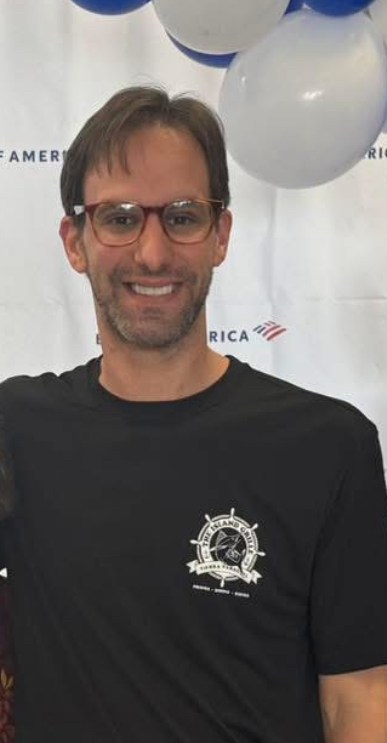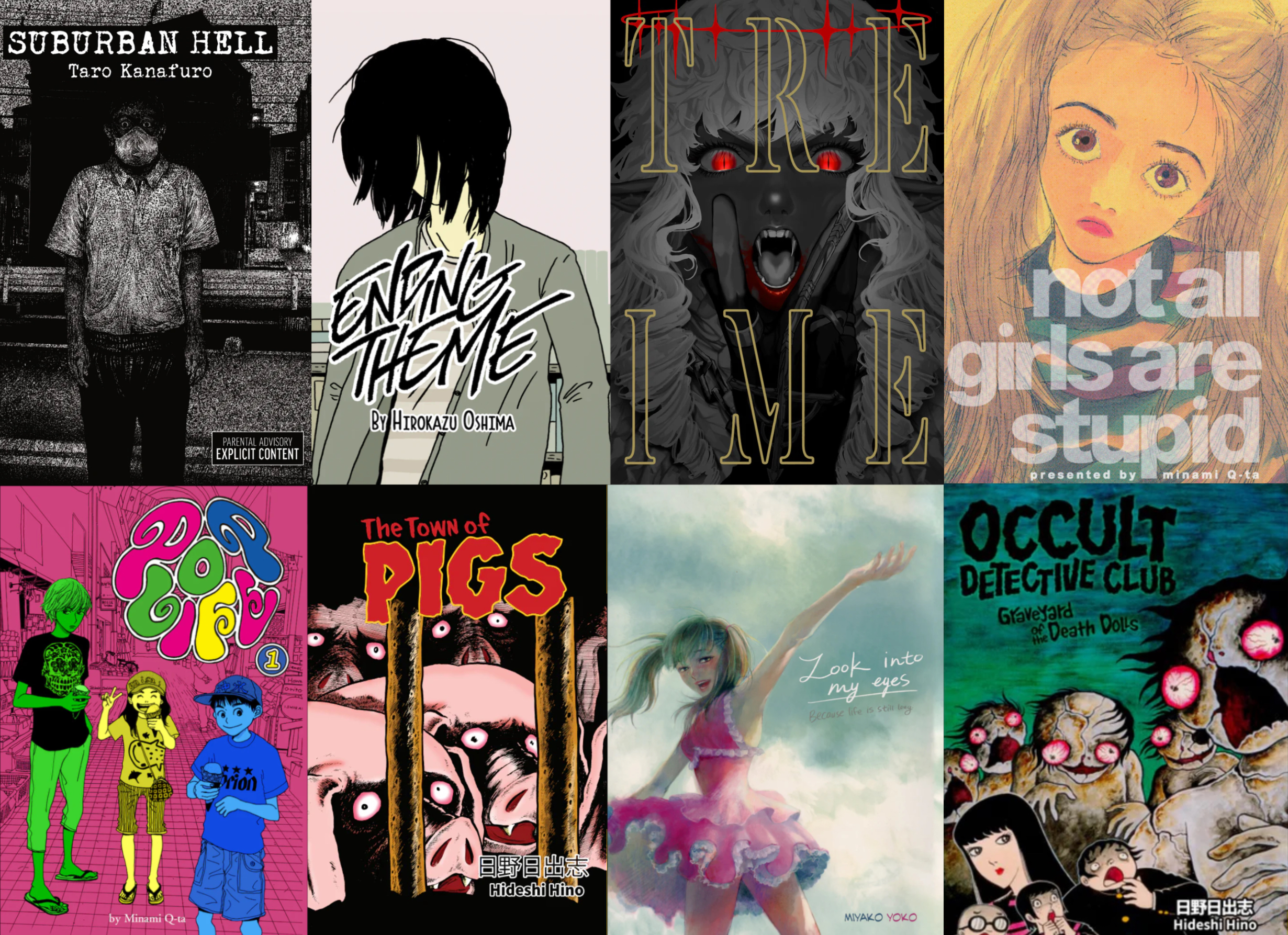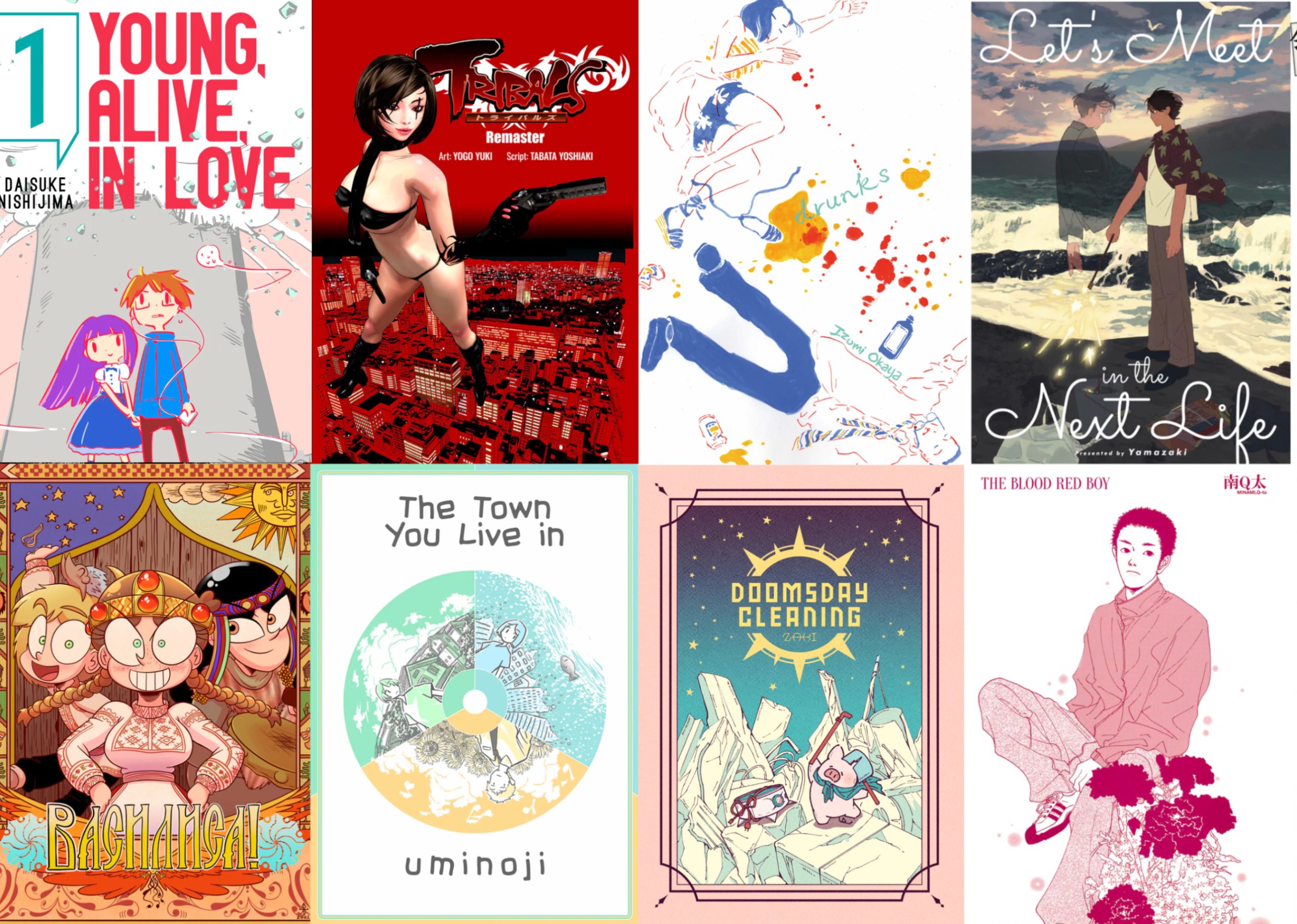
Matt Haasch was a good guy. I mean that in the most classic sense of the term. He was a good person. A good teacher. A good colleague. A good friend. He shined a light, and the world is better for having had him in it.
Matt was the founder and publisher of Star Fruit Books, an independent manga publisher that produced a span of works from some of Japan’s most classic creators as well as its most obscure. Legendary manga editor Carl Horn once famously said that there are no more gold mines left in manga. There are no more undiscovered pockets of Sailor Moon and Berserk that could fund a company for decades. That might be true. But there certainly are more than enough diamonds scattered across the vast plains. Matt found those diamonds and picked them up while everyone else walked by. He was also a teacher at Tarpon Springs Middle School, and quite a beloved one, judging by the number of tributes pouring in from his grieving students on the announcement of his passing.
I first got connected with Matt, of all things, as a fan. He added me as a friend on Facebook and sent me a message in 2019, saying he enjoyed my work. I had no idea at the time that that message chain would become a years long conversation that covered shared interest in classic manga, conventions, and general chit chat. Matt was instantly easy to talk to and had an infectious enthusiasm. Much of the social media talk at the time in manga fandom was around piracy, with Rachel Thorn and I leading the anti-piracy/pro-artist charge. The counter argument was that many of these works would never otherwise be published in English. To which Rachel and I replied that anyone at anytime could start their own micropublisher and try to license those works, doing it the right way. It was, to some extent, big talk. And we knew it. As the proverbial understatement goes, starting your own publishing company was certainly easier said than done.
Matt did it anyways.
On May 12, 2020, Matt sent me a message saying it was a dream of his to start his own publishing company. His ultimate goal was to publish a classic shojo from a year 24 author, but he knew he needed to build up to that. We talked about the challenges, the difficulties of attaining licenses, the software expertise needed to letter and publish … he brainstormed something like running Patreons for manga artists, where readers could access English versions of their work. Then in June of the same year, Matt sent me an excited message — his company was live and had their first license. The two-volume series Pop Life by Minami Q-ta was getting a digital release from Star Fruit Books.

I have to explain how extraordinary this was. Haasch was not someone with deep industry or fandom connections. He hadn’t been around for years. He’d never brought two bottles to an Otabrew or closed out a Carl Horn room party. He wasn’t a longtime editor at Viz or appeared on ANNCast. He’s never even worked for Crunchyroll. Yes, I am throwing out a lot of insider jargon here, but the point is there are people who if they told you they were starting their own manga publishing company, you would say “Of course! That makes sense! They are capitalizing on a lifetime of experience and industry connections to create something competitive!” Matt Haasch was not one of those people. He was dude with a dream. And that’s all he needed.
One of Matt’s ideas was to go to artists who were not represented at major publishers. That way, the licensing discussions could be done directly. He had an idea of manga publishing as a true collaborative process, where the manga artist, translators, and publishers all worked together to create something that captured the artist’s vision. He also knew that there was an untapped space of Japanese manga, where indie artists created unique works that didn’t conform to the metrics of commercial success.
Matt said he got his first license with Minami Q-ta because she was the only one who wrote him back. Q-ta became a sort of mentor with Matt, helping him navigate the complicated world of Japanese license requests and introducing him to other artists. Clearly, his idea of a truly collaborative process had merit. Other artists started responding to his emails. Other comics joined Star Fruit Books. Matt was able to expand his listings. He supported other start-ups, such as digital publisher and distributor Azuki, partnering with Evan Minto to jointly promote Azuki and Star Fruit Books. And he expanded from digital to print books.
I first met Matt in person at AnimeNYC in 2022, three years deep into our chat. By this time, he was well-established in the indie manga industry. Matt was excited to have a panel promoting Star Fruit Books and walked around proudly in his Star Fruit Books t-shirt. In person, he was as kind, witty, and interesting as he had been in our chats. I still regret not taking a picture together; you always think you have another chance.
One of Matt’s proudest moments was joining a manga publisher’s roundtable panel at SDCC in 2024. Star Fruit Books joined VIZ Media, Kodansha, and other major players. Matt was somewhat shy to be up there at the same table as titans like Ben Applegate and Ed Chavez, whose careers spanned decades. But he was greeted as an equal, as a fellow. He had earned his right to be on that stage. SDCC was my second time meeting Matt, and I assumed that now as an established professional he would become a regular on the convention circuit. I snuck him in the line to meet Gou Tanabe. We made plans to work together at last. I pitched him on Saga Miyuki. He pitched me on a classic work of Japanese sci-fi he had just bought in an auction. We even agreed on rates.

Success built upon success for Star Fruit Books. In a truly stunning move, Matt acquired the rights to manga horror grandmaster Hideshi Hino, one of the most famous and popular artists to ever come out of Japan. He was publishing '60s shojo artist Chikae Ide’s The Final Strike. He was on his way to achieving his dream. With Hino already acquired, a year 24 author was well within his grasp.
Life, as is often the case, had other plans.
In late July 2025, Matt talked about visiting the hospital for pain in his shoulders and neck. Biopsies were done. CT scans were performed. Prayers were prayed, and for a short while Matt was glad to be home with his cat. From there, things proceeded as they do in the modern world. The obligatory GoFundMe was established to help Matt with his upcoming bills. A MealTrain was established. There were more visits to the doctor. Matt constantly and continually reassured us all that he was on the mend. That he was feeling better. In no uncertain terms, he said he was not going to die.
On Sept. 6, he was gone. He was only 35. According to his official obituary, he is "survived by his mother and step father, Susan Miccio Kikta and Steven Kikta; grandparents, Kenneth and Janyce Kikta; many loving uncles, aunts, cousins and wonderful friends and students."
Fuck cancer.
To those of us who knew Matt, the loss is indescribable. We are still processing. It does not seem real at all. Tributes have been pouring in, and it is clear Matt meant much to many. It’s hard to talk about the loss in terms of Star Fruit Books and the world of manga, although I realize to many reading this that is their keenest area of concern. By the time of his death, he had seven employees, and I hope they keep up the dream. I would love to see Star Fruit Books publish that year 24 shojo comic. Or maybe prove Carl Horn wrong and find that last untapped gold mine in manga. But all of that will have to be done without Matt.
The one solace I take from all this is one of Matt’s last posts, as he lay on his hospital bed with a feeding tube, stunned at the outpouring of cards, comments, and contributions to his GoFundMe. Matt said, “I knew people loved me but not this much lol.”
May we all be so lucky to find that out, before the end.
The post Remembering Star Fruit Books publisher Matt Haasch, 1990-2025 appeared first on The Comics Journal.

No comments:
Post a Comment